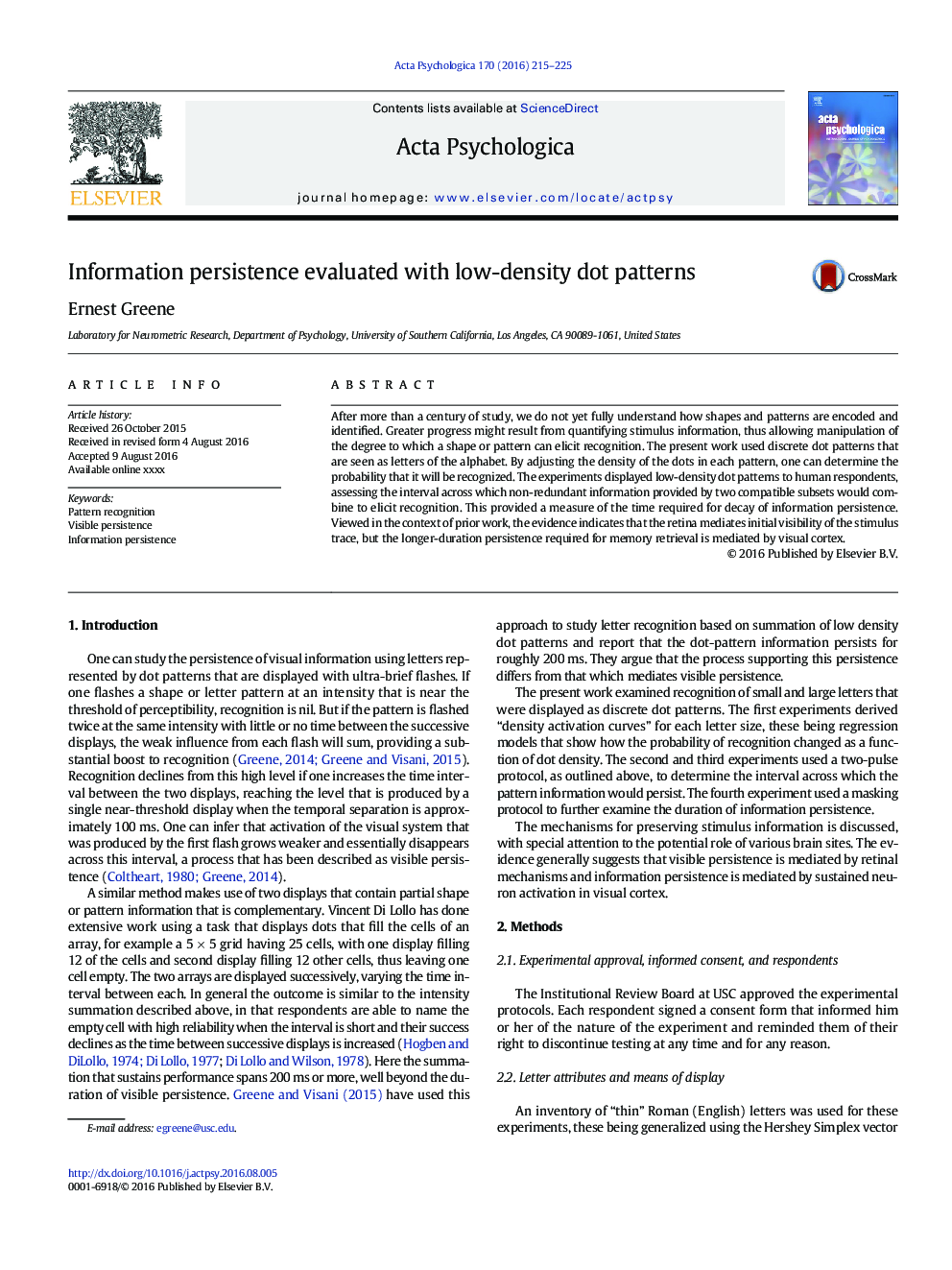| Article ID | Journal | Published Year | Pages | File Type |
|---|---|---|---|---|
| 7277021 | Acta Psychologica | 2016 | 11 Pages |
Abstract
After more than a century of study, we do not yet fully understand how shapes and patterns are encoded and identified. Greater progress might result from quantifying stimulus information, thus allowing manipulation of the degree to which a shape or pattern can elicit recognition. The present work used discrete dot patterns that are seen as letters of the alphabet. By adjusting the density of the dots in each pattern, one can determine the probability that it will be recognized. The experiments displayed low-density dot patterns to human respondents, assessing the interval across which non-redundant information provided by two compatible subsets would combine to elicit recognition. This provided a measure of the time required for decay of information persistence. Viewed in the context of prior work, the evidence indicates that the retina mediates initial visibility of the stimulus trace, but the longer-duration persistence required for memory retrieval is mediated by visual cortex.
Related Topics
Life Sciences
Neuroscience
Cognitive Neuroscience
Authors
Ernest Greene,
